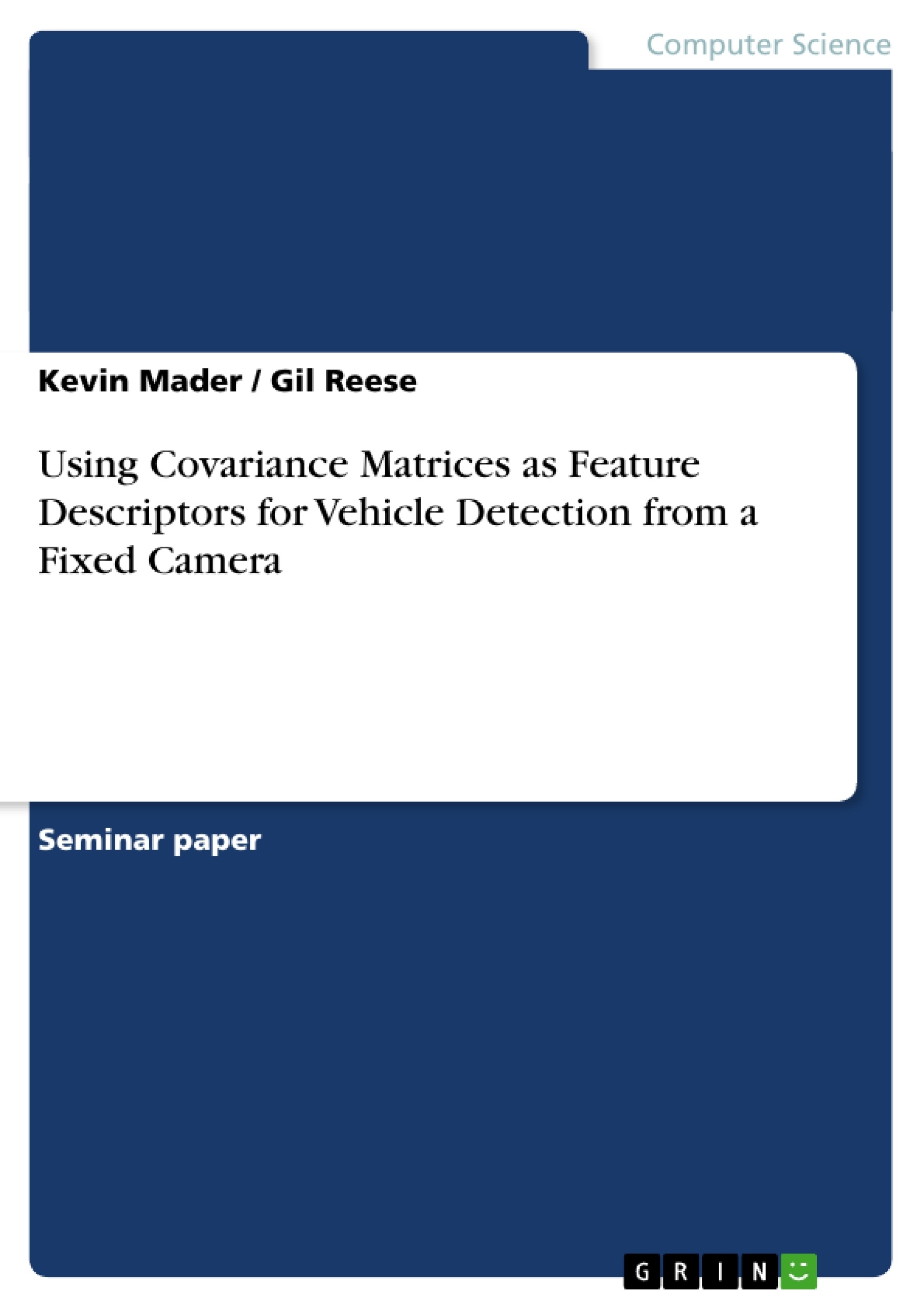A method is developed to distinguish between cars and trucks present in a video feed of a highway. The method builds upon previously done work using covariance matrices
as an accurate descriptor for regions. Background subtraction and other similar proven image processing techniques are used to identify the regions where the vehicles are most likely to be, and a distance metric comparing the vehicle inside the region to a fixed library of vehicles is used to determine the class of vehicle.
Inhaltsverzeichnis (Table of Contents)
- Abstract
- Introduction
- Material and Methods
- Image Acquisition
- Image Preprocessing
- Background Subtraction
- Image Cleaning
- Binary Image
- Segmentation
- Feature Vectors
- Covariance Matrices
- Ontology Creation
- Results
- Discussion
- Shortcomings
Zielsetzung und Themenschwerpunkte (Objectives and Key Themes)
This paper aims to develop and evaluate a method for distinguishing between cars and trucks in a video feed of a highway. The method leverages covariance matrices as feature descriptors for regions, employing background subtraction and image segmentation to identify vehicle locations and subsequently classify them based on their covariance matrix characteristics.
- Vehicle detection and classification using covariance matrices
- Background subtraction and image segmentation for vehicle localization
- Feature vector design for car and truck discrimination
- Evaluation of the algorithm's performance in real-world scenarios
- Analysis of shortcomings and limitations of the proposed approach
Zusammenfassung der Kapitel (Chapter Summaries)
- Abstract: The paper outlines a method using covariance matrices to classify cars and trucks from highway video feeds. Background subtraction and image segmentation techniques are employed to isolate vehicles, and a distance metric compares vehicle features to a pre-defined library.
- Introduction: The paper presents the motivation behind vehicle identification, highlighting potential applications in various domains. It reviews existing approaches and details the methodology used in this research.
- Material and Methods: This section outlines the experimental setup, including image acquisition details, preprocessing techniques, background subtraction methods, image cleaning steps, binary image conversion, segmentation algorithms, feature vector design, covariance matrix calculation, and ontology creation for vehicle classification.
- Results: The paper presents quantitative results obtained using the proposed algorithm, demonstrating its performance on a real-world image dataset. It includes a discussion of the algorithm's accuracy and limitations, highlighting specific examples.
- Discussion: The paper analyzes the algorithm's performance, highlighting its strengths and weaknesses. It examines the impact of factors such as camera angle, lighting conditions, and segmentation accuracy on the classification process.
- Shortcomings: This section discusses the limitations of the proposed method, focusing on potential challenges related to segmentation errors, the impact of noise artifacts on distance metric calculations, and the need for further refinement of the algorithm.
Schlüsselwörter (Keywords)
This paper focuses on vehicle detection and classification using covariance matrices as feature descriptors. Key topics include background subtraction, image segmentation, feature vector design, and the evaluation of the algorithm's performance in real-world scenarios. The research utilizes image processing techniques and employs distance metrics to distinguish between cars and trucks based on their visual characteristics.
- Citar trabajo
- BS Kevin Mader (Autor), Gil Reese (Autor), 2006, Using Covariance Matrices as Feature Descriptors for Vehicle Detection from a Fixed Camera, Múnich, GRIN Verlag, https://www.grin.com/document/75134



